German vs French Clarinet: What’s the Real Difference
Affiliate Disclosure
This post may contain affiliate links. If you buy through them, I may earn a small commission at no extra cost to you. This helps support the site and keeps our content free for you.
If you prefer not to use affiliate links, you can search products directly on the maker’s site.
German vs French clarinet: these two types look alike. But they are very different inside.
The French clarinet uses the Boehm system. It’s light, bright, and easier to play. The German clarinet uses the Oehler system. It sounds deep, dark, and rich. The keys feel different. Even the mouthpiece, barrel, and reeds are not the same.
This guide will help. You’ll learn how the keywork, tone, and parts change your sound. You’ll see which brands, like Buffet or Wurlitzer fit each type.
By the end, you’ll know what suits your hands, your ears, and your goals.
Let’s make it simple, so you can pick the clarinet that’s truly right for you.
Most Popular French Clarinets
| Product Name | Image | Key Features | Rating | Check Current Price |
|---|---|---|---|---|
| Jean Paul CL-300 Student Clarinet |

|
| ⭐ 4.6 | Price |
| Yamaha YCL-255 Standard Clarinet |

|
| ⭐ 4.7 | Price |
| Buffet Crampon E11 Intermediate Clarinet |
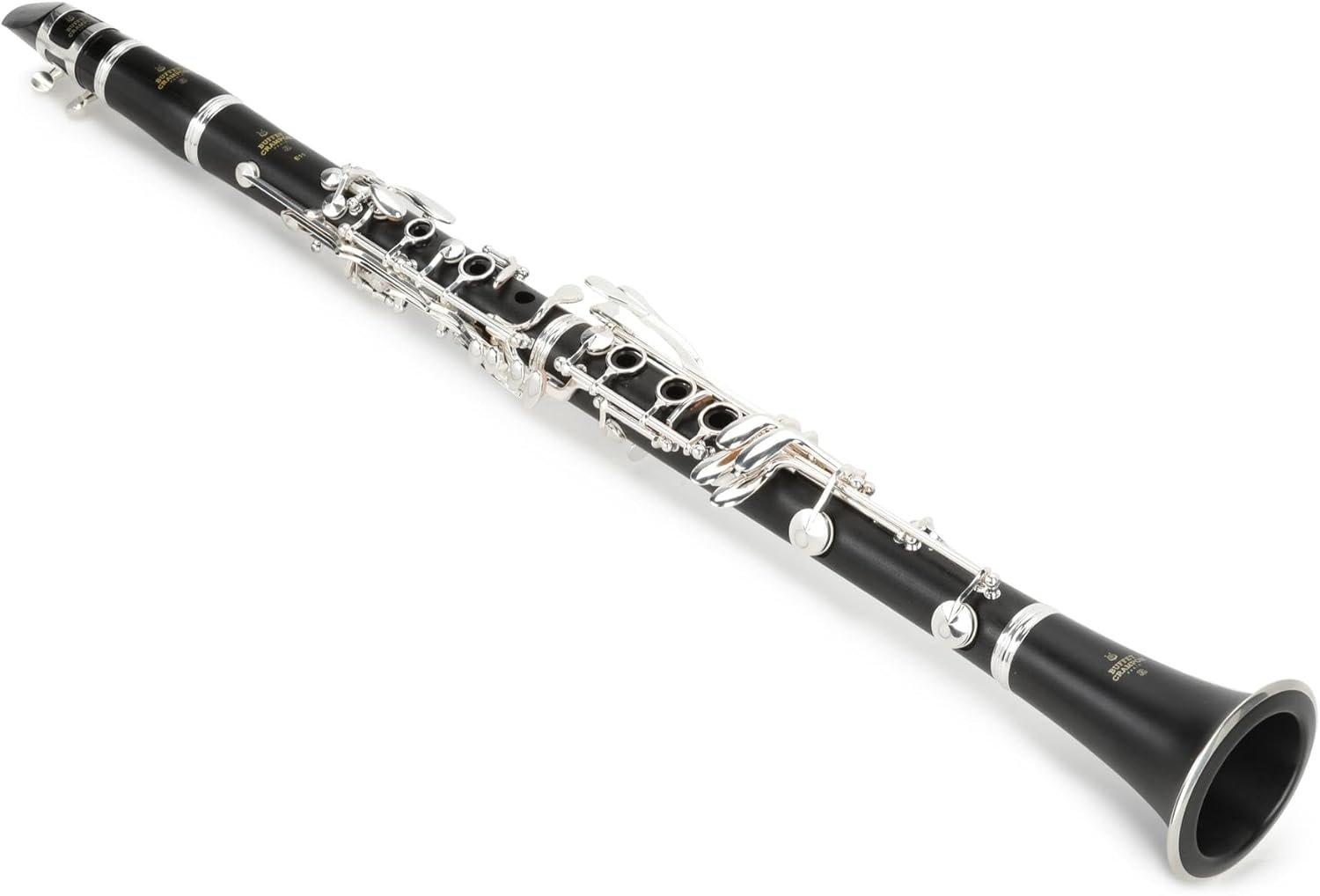
|
| ⭐ 4.8 | Price |
| Mendini by Cecilio Bb Clarinet |
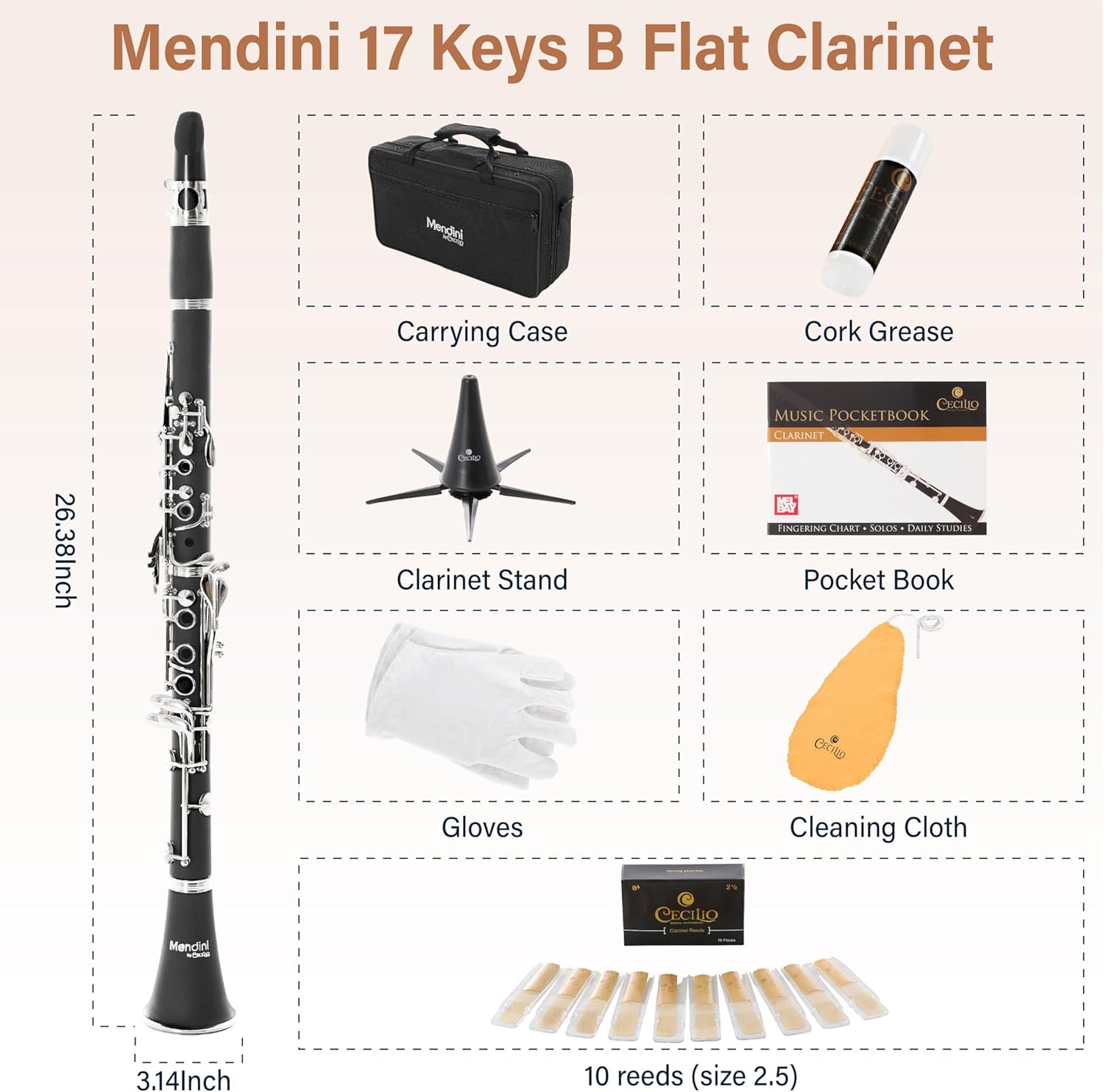
|
| ⭐ 4.5 | Price |
| Glory GLY-PBK Clarinet |
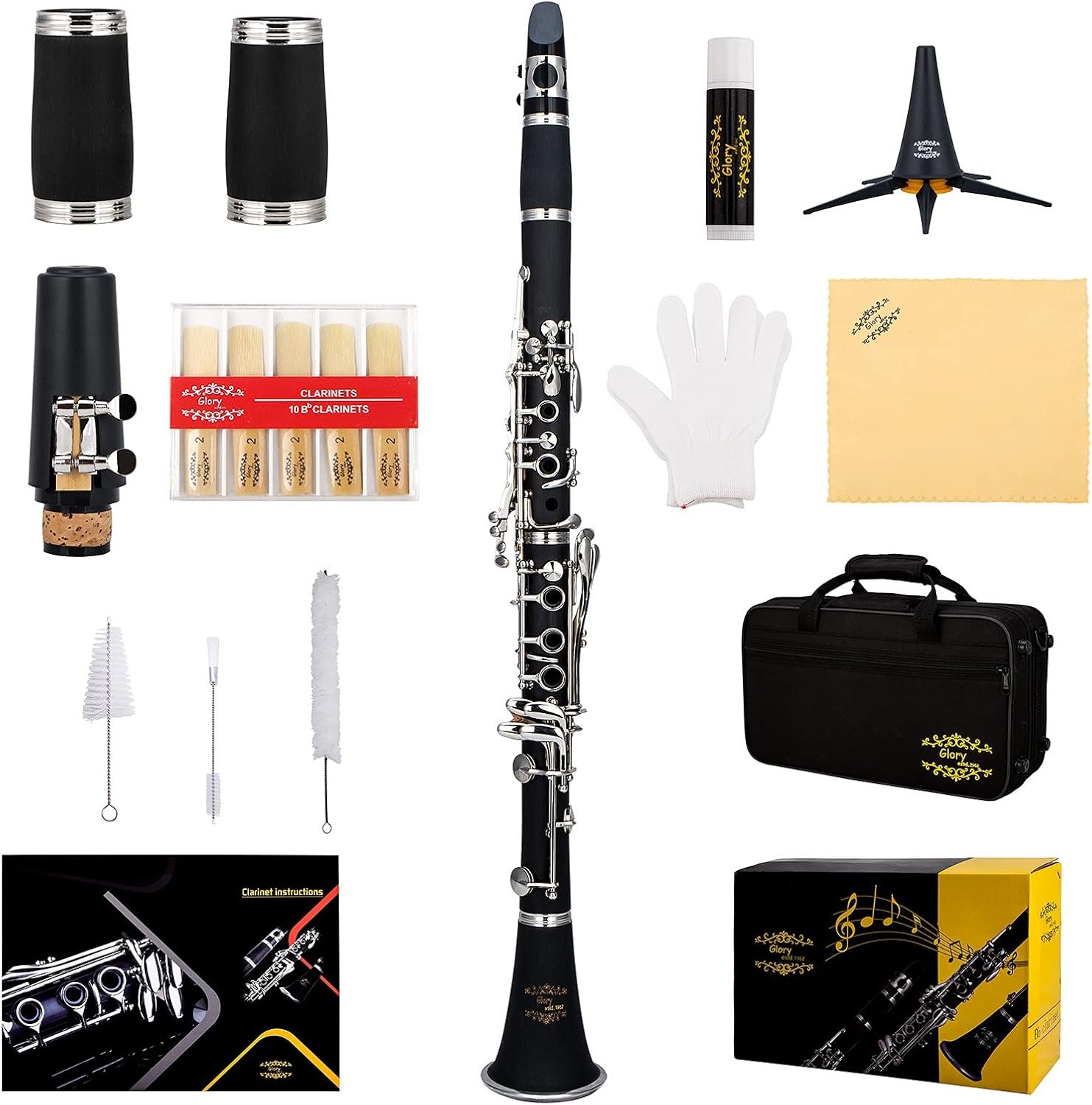
|
| ⭐ 4.3 | Price |
German vs French Clarinet: What Makes Them Different?
The German vs French clarinet debate starts with how each one is built. Both are played the same way. But inside, they work very differently.
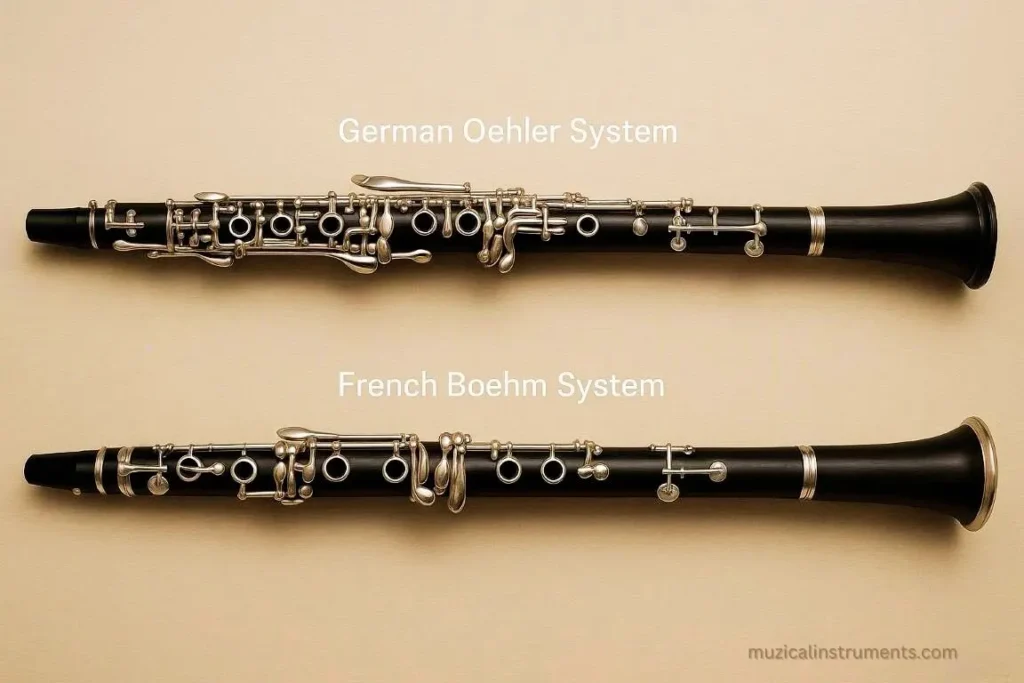
The French clarinet uses the Boehm system. It has fewer keys. The layout is simple. That’s why many beginners start with it. It’s used in the USA, UK, and France.
The German clarinet uses the Oehler system. It has more keys and rolls. The shape inside is tighter. This gives it a dark, smooth sound. You’ll find it in Germany, Austria, and top orchestras.
Even the mouthpieces are not the same. French ones are shorter and use a metal ligature. German ones are longer and use a string tie. The barrels are different sizes too.
So when someone asks “What’s better: German vs French clarinet?”The answer is, it depends. Each one gives you a different feel and tone. That’s why it’s important to know how they work before you choose.
How the German vs French Clarinet Sounds to Your Ear
One big part of the German vs French clarinet choice is how each one sounds. Close your eyes. Listen. You’ll hear the difference right away.
The French clarinet sounds bright, light, and clear. It works well in bands, jazz, and schools. The tone is open. It can bend and move fast.
The German clarinet sounds deep, warm, and smooth. It feels steady. It’s made for rich music, like in symphony halls.
This sound comes from the bore shape inside the clarinet. French clarinets have a wider bore. German ones are smaller and tighter.
Even your reed and mouthpiece change the sound. That’s why your ear matters. Try both. See which one feels like your voice.
How the German vs French Clarinet Feels in Your Hands
Another key part of the German vs French clarinet choice is how each one feels when you play it. The keys are not the same.


The French clarinet has fewer keys. The layout is simple. It’s easy to reach. Many new players like this system. It’s called the Boehm system.
The German clarinet has more keys. Some are close together. Some sit lower. It takes time to learn. This is the Oehler system.
Look at the little-finger keys, they’re shaped differently. That may change how fast you can move your fingers.
Even the barrel and bell feel different in your hands. The German model is a bit heavier. The French one is lighter and easier to balance.
If your hands are small, try both before you pick. The way it feels matters as much as the sound.
German vs French Clarinet: What About Mouthpieces and Reeds?
Here’s another big part of the German vs French clarinet question, what fits the mouthpiece and reed? These small pieces change how your clarinet sounds and plays.
The French clarinet mouthpiece is short and wide. It uses a metal ligature to hold the reed. The reed is thinner and cut flat. This makes it easy to blow and quick to respond.
The German clarinet mouthpiece is longer and more narrow. It uses a string ligature. The reed is thicker and cut in a different way. This makes the tone smooth but harder to control at first.
You can’t just swap parts between the two. The mouthpiece, reed, and barrel must match the system.
So when thinking about German vs French clarinet, remember this: even the small pieces must fit. That’s why it’s smart to try the full setup before you buy.
Where They’re Played and Why It Matters
The German vs French clarinet isn’t just about sound or feel. It also depends on where you live, or where you plan to play.
The French clarinet is the most common in the world. It’s used in the United States, the UK, France, and many schools and bands. Most teachers use the Boehm system. So if you’re just starting, this one might be easier to find.
The German clarinet is used mostly in Germany, Austria, and a few other European countries. It’s common in classical music and big concert halls. The Oehler system is harder to learn, but many pros love the rich sound.
Some people try the Reform Boehm system. It’s a mix of both styles. But it’s not easy to find.
So when thinking about the German vs French clarinet, ask yourself: Where will I play? Who will teach me? The answer can help you pick the right one.
Which Brands Make Them?
When considering the german clarinet vs french choice, it helps to know the brands. Some brands only make one kind. Others focus on both, but in different ways.
French clarinets use the Boehm system. Top brands include Buffet Crampon, Selmer, and Yamaha. These are easy to find in music stores and schools. Many students begin with them.
German clarinets use the Oehler system. They are made by special brands like Herbert Wurlitzer, Uebel, and Schwenk & Seggelke. These are often handmade and cost more. But they sound warm and deep.
You can’t mix parts between the two types. A German barrel won’t fit a French body. The mouthpieces, keys, and reeds are all made for their own system.
So if you’re thinking about a German vs French clarinet, check the brand too. It tells you a lot about what to expect.
German vs French Clarinet: Which One Should You Choose?
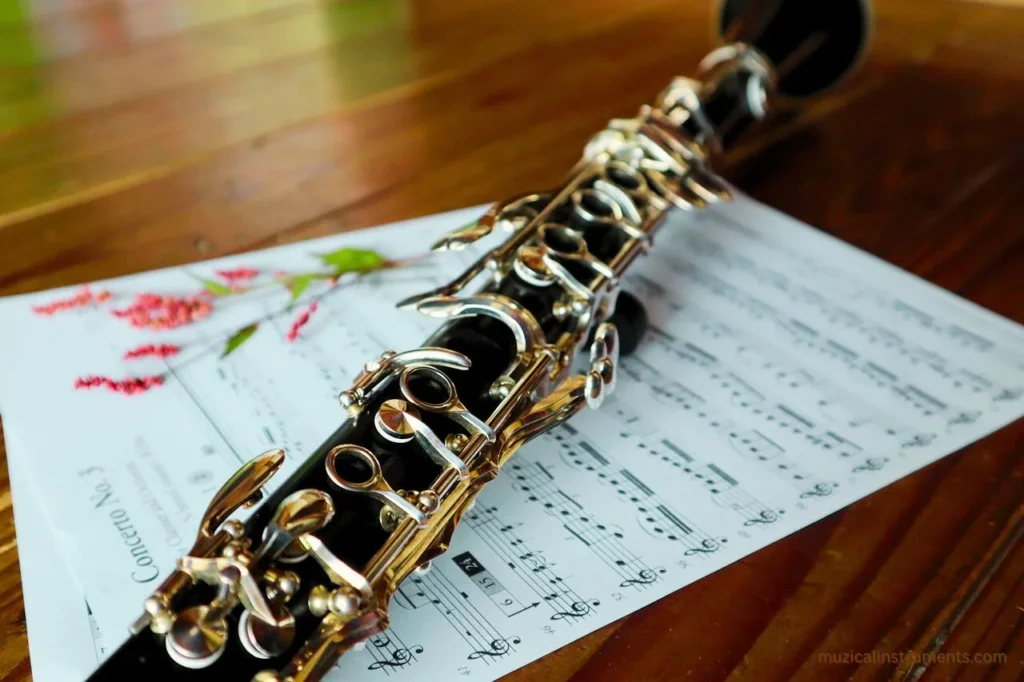
Still not sure which to pick? The German vs French clarinet choice can feel tricky. But don’t worry, we’ll make it easy.
If you’re a beginner, the French clarinet might be best. It’s lighter. The keys are simple. And most teachers know the Boehm system. You’ll find more books, lessons, and videos for it too.
If you already play and want a rich, smooth tone, try the German clarinet. The Oehler system takes more time to learn. But many pros love the warm sound. It works well in big orchestras and slow, deep music.
Do you have small hands? The French model may feel better. Want a special sound? The German one may be right.
So in the end, the German vs French clarinet choice depends on you, your hands, your ear, and your goals. Try both if you can. The right one will feel just right.
German vs French Clarinet: Quick Side-by-Side Comparison
Still thinking about the German vs French clarinet? This chart shows the big differences in one place. Take a look. It might help you decide faster.
| Feature | French Clarinet (Boehm) | German Clarinet (Oehler) |
|---|---|---|
| Sound | Bright and clear | Dark and warm |
| Key system | Fewer keys (simple) | More keys (complex) |
| Mouthpiece | Short with metal ligature | Long with string ligature |
| Reed | Thin, flat cut | Thick, different cut |
| Where it’s used | USA, UK, France, schools | Germany, Austria, orchestras |
| Ease for beginners | Easier to start | Harder to learn |
| Parts fit together? | Yes, with Boehm system | Yes, with Oehler system |
This German vs French clarinet chart makes it simple to compare. You can now see what fits your needs, hands, and music style.
Final Thoughts: Picking Your German vs French Clarinet
You’ve learned a lot about the German vs French clarinet. Now it’s time to choose what fits you best.
The French clarinet is great for new players. It’s simple, light, and easy to find. You’ll have more help learning it, especially if your teacher uses the Boehm system.
The German clarinet is deep and smooth. It takes more work, but it can sound beautiful in the right hands. Many advanced players love it for classical music.
No choice is wrong. Both are great. The best clarinet is the one that feels good and sounds right to you.
So if you can, try both. Ask your teacher. Visit a music shop. Listen with your ears and feel with your hands.
Your German vs French clarinet journey is just starting, and your sound is waiting to be found.
If you’re interested in the roots of the German clarinet system, take a look at our post on antique German clarinets and how they shaped today’s tone and build.
FAQs: You Asked, We Answered About the German vs French Clarinet
1. I’m just starting out should I go with German or French?
Great question. If you’re brand new to the clarinet, the French (Boehm) system is usually the easier path. It’s what most schools and teachers use. The keys are more straightforward, and it’s easier to find help, gear, and lessons. The German (Oehler) system is awesome too, but it can be a bit tricky for beginners unless you have a teacher who knows it well.
2. Can I switch between the two systems later?
Technically, yes, but it’s like switching from driving on the right side of the road to the left. The fingerings are different. The mouthpieces, reeds, and even the feel of the keys change. Some players switch, especially for orchestral work. But it takes practice and patience. If you’re thinking about switching, talk to your teacher or a pro who’s done it.
3. Why do German clarinets sound so different?
That rich, dark, “chocolatey” tone comes from the smaller bore, thicker reed, and unique mouthpiece of the German system. It’s smoother and less edgy than the French sound. Some players love it for slow, emotional music. Others feel it blends better in big orchestras. It’s all about the tone color you’re after.
4. What’s the deal with the mouthpieces and reeds? Can I mix them?
Not really. German and French mouthpieces are shaped differently, and they use different reed cuts. A German reed won’t fit on a French mouthpiece, and vice versa. Some players experiment with “hybrid” setups, but unless you know exactly what you’re doing, it’s best to stick with matched parts.
5. Is one better than the other?
Nope, they’re just different. The french vs german question isn’t a battle. It’s more like: “Which one fits me better?” If you love a warm, deep tone and don’t mind a steeper learning curve, go German. If you want flexibility, ease, and a brighter sound, French might be your jam. Both systems can sound beautiful in the right hands.
6. How can I tell which kind I have?
Look at the key system. French (Boehm) clarinets usually have fewer keys and a simpler layout. German (Oehler) clarinets have more complex keywork, especially around the little finger. Also check the mouthpiece, French ones are usually wider and use metal ligatures; German ones are narrower and often use string.
7. Can I play jazz on a German clarinet?
You can, but most jazz players use the French system. That’s because it’s brighter and more flexible, which fits jazz styles better. But hey, if you love your German clarinet and it grooves with you, go for it! It’s all about your sound.
